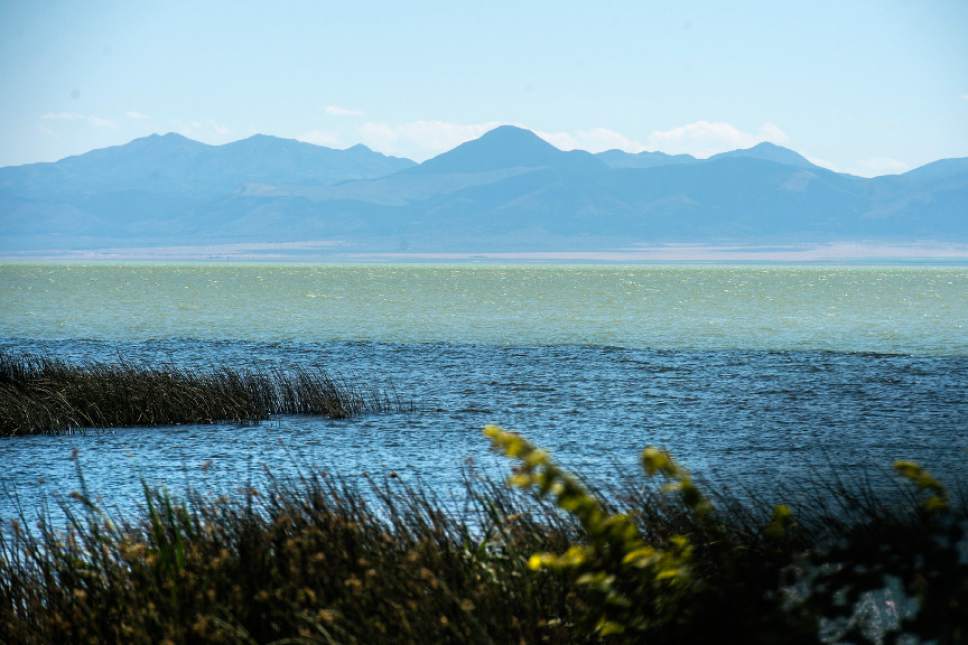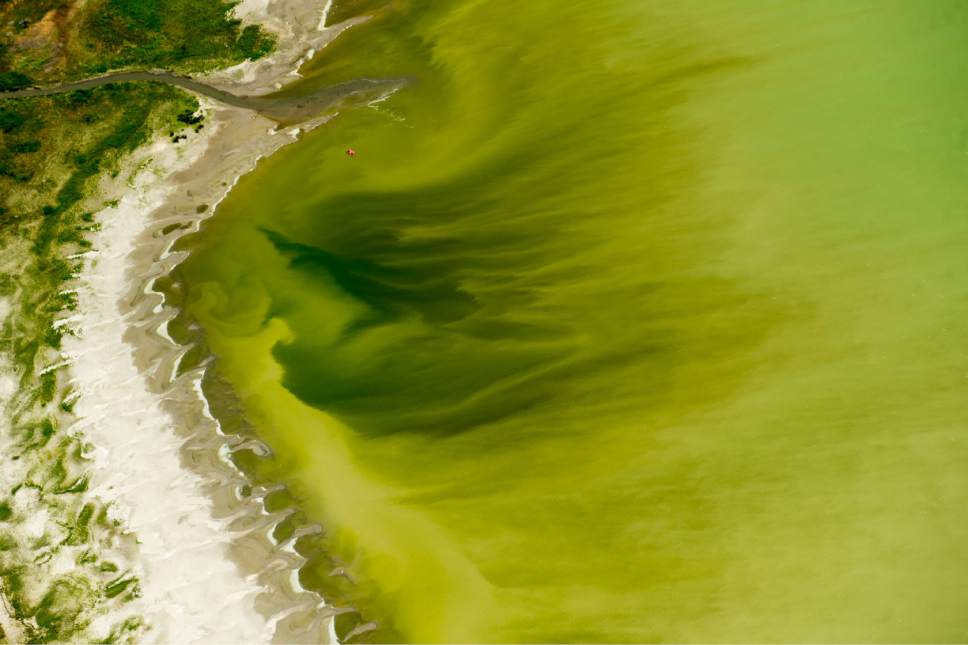This is an archived article that was published on sltrib.com in 2017, and information in the article may be outdated. It is provided only for personal research purposes and may not be reprinted.
The return of toxic algae to Utah Lake may force closures over this coming Fourth of July weekend.
Officials with the Utah County Health Department began posting warnings signs in the Provo Bay and harbor area Thursday afternoon after early indications of the bloom were present in routine water samples collected earlier this month.
Ben Holcomb, who specializes in harmful algal blooms at the Utah Department of Environmental Quality, said samples collected over the past two weeks indicate that the bloom has grown to such a size that it could threaten human health.
He said satellite imagery suggests that the bloom, which originated in Provo Bay, continues to grow and spread north, into the main body of the lake.
Samples collected from Provo Bay on Monday contained low levels of microcystin, a liver toxin produced by cyanobacteria, also called blue-green algae or toxic algae.
The amount of toxins present on Monday did not indicate that a warning or closure on Utah Lake was necessary, but because the bloom continues to grow, he said, the situation likely has worsened or will worsen.
"It seems very likely because we haven't had any major change in weather," he said. "It continues to stay hot, and in all likelihood the bloom is just growing now. It doesn't show any signs of reducing."
Aislynn Tolman-Hill, a public information officer with the Utah County Health Department, said the department posted signs to communicate potential danger to people who plan to spend some time on the water over the holiday weekend.
As long as the warning is in place, Holcomb said, those who visit Provo Bay this weekend should avoid full immersion in the water to prevent exposure to the algae's toxins. Ingesting microcystin can cause nausea, abdominal pain, diarrhea and vomiting. Contact can cause eye irritation and rash.
The analysis of more current samples is expected to be complete either Friday morning or early next week. Depending on the contents of those samples, Tolman-Hill said, the health department may opt to close parts of the lake.
While there was hope that higher water levels and cooler temperatures would prevent a repeat of last summer's massive bloom on Utah Lake, Holcomb said the appearance of a toxic algal bloom this early in the season is not encouraging.
Algal blooms are more common in the later summer months and early fall, when water temperatures are warmest. But Holcomb said global warming could make for earlier and larger algal blooms.
"Last year was early," he said. "I think it follows the same trend. Every year is hotter, and it's hard to ignore that."
The number of toxin-producing bacteria — cyanobacteria, despite often being called algae, are actually bacteria — is smaller than the numbers seen in last summer's Utah Lake bloom, Holcomb said. The predominant species this year is more inclined to produce toxins than the species that dominated Utah Lake in 2016.
"Hopefully we're out in front of it so the public can avoid being exposed to it," he said.
Twitter: @EmaPen







